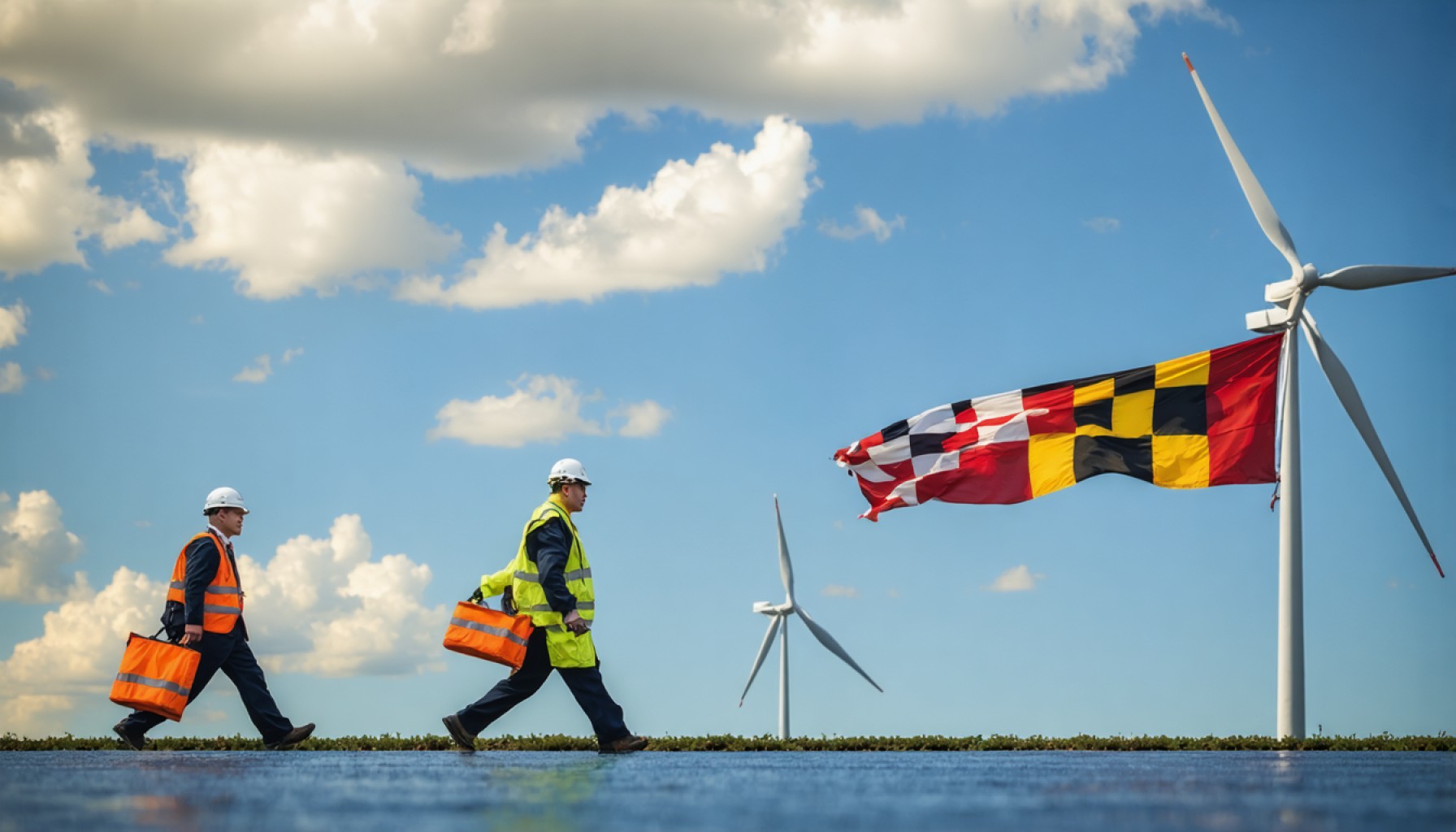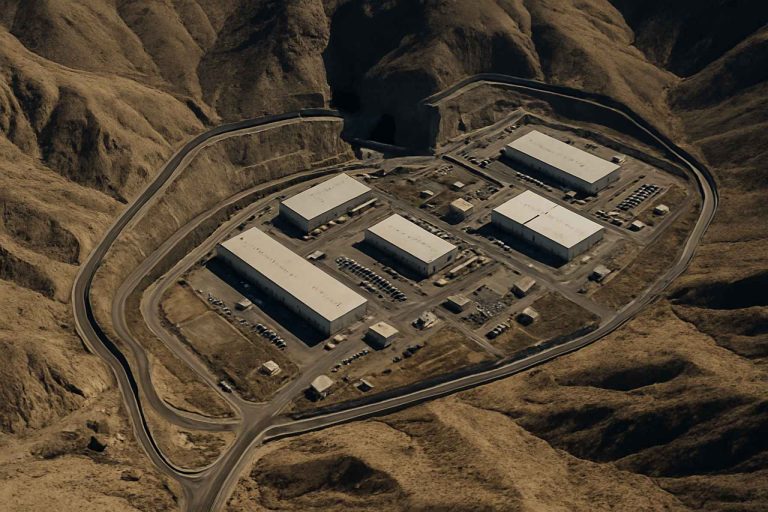
- Maryland aims for a transformative energy future by passing significant energy reform bills.
- The reforms focus on enhancing power generation, reducing electricity costs, and streamlining solar project regulations.
- A new state office will oversee strategic energy planning, boosting local energy production.
- Controversy surrounds provisions favoring natural gas, though future conversion to hydrogen or biofuel is mandated.
- Projected consumer savings include utility regulation tightening and average rebates of $80.
- The reforms include a 5% solar development cap on protected agricultural lands to balance energy growth with farmland preservation.
- Maryland’s energy reform journey poses identity challenges, balancing innovation with traditional values.
- The governor’s decision will determine the implementation of this pioneering energy initiative.
Maryland stands on the brink of an energy revolution as the state House passes a groundbreaking series of energy reform bills, poised to reshape its electricity landscape. Against a backdrop of swelling electric bills and mounting pressure from power-hungry data centers, these reforms aspire to supercharge the state’s power generation and slash costs for consumers.
Picture this: a patchworked energy policy, quilted from decades of clashing local regulations, giving way to a streamlined vision where solar fields blanket rooftops, and batteries hum silently in basements, storing energy for times of need. These bills, driven by state leaders in the General Assembly, offer a pathway to a cleaner, more sustainable energy future, while addressing an urgent economic concern for residents.
The reforms promise uniform standards for solar installations, freeing energy projects from a tangled web of local hurdles. A new state office dedicated to strategic energy planning is set to rise, charged with orchestrating a future where Maryland generates more of its own energy, reducing dependency on interstate power lines that thread through rural landscapes.
Not without controversy, this legislative package stirs debate over the role of traditional energy sources. Environmental advocates are wary, raising alarms over potential provisions favoring natural gas. Yet, the bills contain a caveat: any new gas plants must transform into hydrogen or zero-emission biofuel facilities as technology permits—a fragile compromise in the race against climate change.
Advocates envision significant savings—potentially hundreds of millions over coming years—as utility regulations tighten. Multiyear rate plans, which allow creeping increases, are under scrutiny, and limitations on spending ratepayer funds aim to protect consumers’ wallets. An average rebate of $80 could soon light up mailboxes across Maryland, igniting some relief for everyday citizens.
Yet, the story remains complex. A 5% cap on solar development in protected agricultural lands hints at a battle between energy progress and the preservation of Maryland’s agrarian soul. Ostensibly, this seeks to offer a lifeline to farmers willing to put up solar panels. In contrast, critics fear it could erode thousands of acres of farmland, disrupting the grain production that feeds not only the state but the poultry houses reliant on it.
As with any monumental shift, the energy reform package doesn’t simply realign wires or recount regulations; it challenges Maryland’s historical romance with its landscape. It poses a question of identity: how to expand and evolve while respecting deeply rooted traditions.
The takeaway is clear: Maryland is daring to innovate amidst challenges, aiming to become a beacon of modern energy solutions that serve both the economy and the environment. As the legislative session draws to a close, all eyes now turn to the governor’s office, where the fate of this transformative energy journey awaits final approval.
Maryland’s Energy Revolution: What You Need to Know
Maryland is set for an energy revolution with the recent passage of ground-breaking energy reform bills by the state House. These reforms aim to reshape the state’s electricity landscape, aiming for reduced consumer costs and enhanced power generation capabilities. Let’s dive into the myriad aspects of this legislative milestone, along with insights into potential impacts, future trends, and actionable recommendations for consumers.
Key Highlights of Maryland’s Energy Reform
1. Unified Solar Standards: The reforms promise to standardize solar installation requirements, reducing bureaucratic hurdles. This could boost solar adoption across the state, helping homeowners and businesses transition to renewable energy sources.
2. New Strategic Energy Planning Office: A state office dedicated to energy planning will be established, aiming to reduce Maryland’s reliance on out-of-state power sources and enhance local energy generation.
3. Controversies Surrounding Traditional Energy: Environmental advocates express concerns about the possible continued use of natural gas. However, the legislation mandates any new gas plants to convert to hydrogen or zero-emission biofuel facilities as soon as it’s viable, representing a compromise in the energy transition.
4. Impact on Utility Bills: The reforms scrutinize multiyear rate plans, aiming to curb incremental increases. As a result, consumers could see direct financial relief, including an average rebate of around $80.
5. Agricultural Land and Solar Development: With a 5% cap on solar development in protected agricultural areas, the state balances energy development with preserving farmland. This provision seeks to enable farmers to participate in solar projects without compromising agricultural productivity.
Real-World Use Cases and Implications
– Homeowners and Small Businesses: Expect streamlined processes for installing solar panels, potentially increasing property values and reducing energy expenses.
– The Agricultural Sector: Farmers have the opportunity to diversify income through solar projects, although concerns about land use persist.
– Consumers: The introduction of new energy bills and potential rebates offer some financial relief amidst rising utility costs.
Future Trends and Market Forecasts
– Increased Solar Adoption: With reduced installation obstacles, the solar market in Maryland is likely to see substantial growth.
– Energy Price Stabilization: As local generation increases, reliance on interstate power sources could diminish, stabilizing—or even reducing—energy costs over time.
– Tech Innovations in Renewables: Maryland’s focus on transitioning traditional energy sources to hydrogen or biofuels signals potential developments in renewable technology within the state.
Pros and Cons Overview
Pros:
– Potential reduction in energy costs.
– Increased adoption of renewable energy sources.
– Strategic planning for state energy independence.
Cons:
– Concerns over the transition period for traditional energy sources.
– Potential loss of agricultural land to solar development.
Actionable Recommendations for Maryland Residents
1. Explore Solar Options: Homeowners should consider installing solar panels to benefit from streamlined regulations and financial incentives.
2. Stay Informed: Residents should keep abreast of policy changes to maximize potential rebates and understand utility rate adjustments.
3. Participate in Local Discussions: Engage with community initiatives focused on energy planning to ensure balanced decisions that respect local landscapes.
Maryland’s energy reform marks a significant step towards addressing climate and economic challenges, offering a model for other states considering similar reforms. As the bills await the governor’s approval, Maryland residents stand at the forefront of a cleaner, more sustainable energy future.
For further information, visit the Maryland Government’s website.



